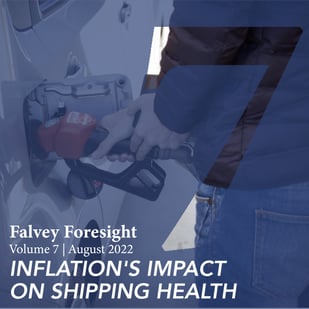Advancements in Shipping Technology
The first standard ocean shipping container was created in 1956 and revolutionized the industry, yet since then, shipping has been slow to adopt many changes in new technology. However, there is an advancing wave of technology that seems to be rising and being adopted by the shipping sector in a way not seen before, and creating new efficiencies. These advancements are geared toward improving shipment tracking, reducing carbon emissions, developing safer conditions for crews, and several other objectives.
The following are just a few examples of the many ways the shipping industry is taking advantage of the latest technology to revolutionize the way it operates.
Smart Containers
Smart containers are shipping containers that feature advanced technology, such as solar panels, GPS tracking, and sensors.
This technology records information about the cargo, providing real-time data to the shippers, from the location of the cargo to the temperature inside the container.
These smart containers can help shippers better understand the status of their shipments, monitor the supply chain, and respond to any issues. With this information, shippers can remotely make adjustments to ensure the cargo remains in good condition and gets delivered on time.
By 2026, reports suggest this technology will account for 25% of the global box fleet.
Autonomous Shipping Technologies
Every year, there are roughly 3,000 cargo collisions resulting in around $20 billion in damage. Of those incidents, reports have determined that nearly 75% of them are due to human error.
These collisions are not only costly, but they can be deadly, too, as they can kill and injure crew members and destroy the surrounding marine life.
In light of these findings, the shipping industry is leaning more heavily toward the development of autonomous shipping technologies, which involve remotely-operated container ships without a crew onboard. This technology incorporates Artificial Intelligence (AI) and data collection to help track active container ships and prevent collisions, creating safer, more cost-efficient cargo fleets.
Advancements in Route Optimization
The shipping industry is also turning to AI to help build route optimization models. Shipping companies can use this technology to predict the optimal route, taking into account a variety of variables like available resources and inclement weather. What’s more, thanks to real-time data, these ships can change course and reroute when faced with setbacks or obstacles during their journeys.
These advancements in route optimization can help cargo ships increase productivity, reduce fuel consumption, stay on schedule, and even cut costs.
Robots
We’re seeing the introduction of robots in all sorts of spaces, and the shipping industry is no exception. While there are many kinds of robots that perform different tasks, perhaps those most important to this industry are the ones that take the place of humans in hazardous or potentially dangerous situations. For example, some robots are designed to fight fires onboard, while others can help clean up oil spills, inspect vessels, provide underwater maintenance, and even clean the ship’s hull. These robots can cover the risky tasks on cargo ships, creating a safer environment for crew members.
Drones
Like robots, drones are becoming commonplace in certain areas of the shipping industry, particularly regarding surveillance. Often, these drones are deployed to inspect areas of the ship that are either inaccessible or dangerous for humans. For instance, a drone can easily assess and diagnose an issue while a ship’s en route rather than requiring it to go on-shore for maintenance. In other cases, a drone can inspect the damage on a cargo ship, provide an aerial perspective, and deliver data to help the crew quickly and efficiently address the crisis without putting their own lives in danger.
Hydrogen-Fueled Container Ships
Another major area of focus involves using technology to promote sustainability. For instance, SeaShuttle is a Norwegian project geared toward developing two remotely-controlled, hydrogen-powered, zero-emission container ships. The partnership between a Dutch transport company and a marine robotics company is aimed at creating Europe’s first green corridor between Oslofjord, Norway, and Rotterdam, Netherlands. The goal is for SeaShuttle to act as a blueprint for additional sustainable shipping operations that encourage decarbonization and other eco-friendly initiatives.
Experiments with Wind Power
Although the studies are still in the early stages, one company is testing whether wind power can help offset carbon emissions from cargo ships.
In 2023, Cargill Ocean Transportation, a freight-trading organization, will place large wind sails on a dry bulk vessel with the hopes that it can reduce the ship’s carbon emissions by 30%.
Cargo ships are responsible for roughly 3% of the world’s carbon emissions, so if these experiments are successful, the introduction of wind sails on other vessels could greatly reduce their environmental impact.
As we look toward the future, these advancements and initiatives suggest the shipping industry is looking to work smarter—not harder. By taking advantage of the latest technology, shippers can develop a safer and more efficient, productive, and cost-effective environment.




